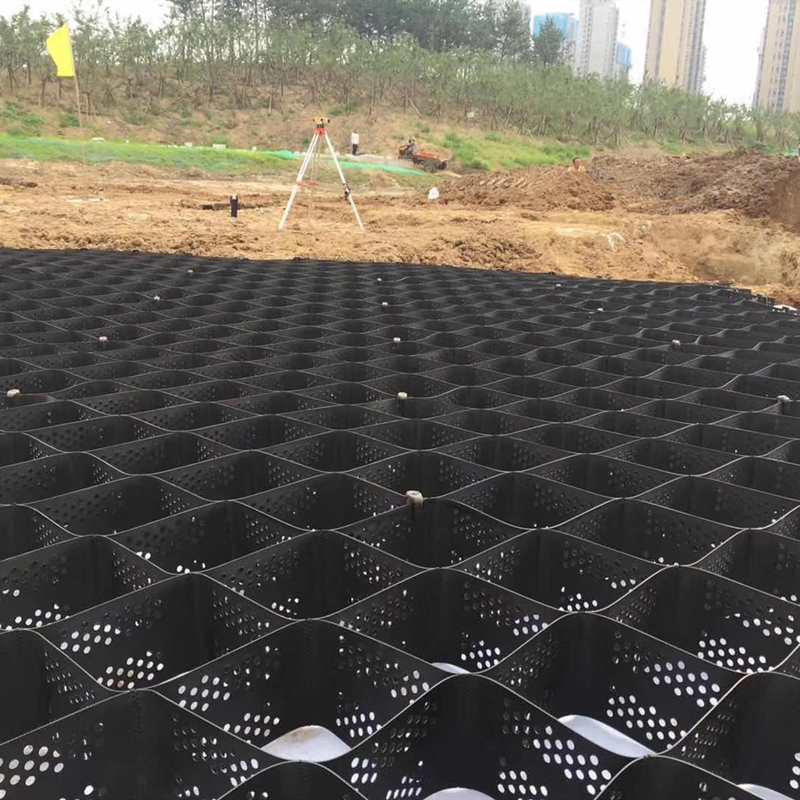澳大利亚HDPE土工格室用于土壤稳定
土壌安定化のためのオーストラリアのHDPEジオセル
Australian HDPE geocells for soil stabilization
- Geocell
- Geomembrane
- Uniaxial geogrid
- Biaxial geogrid
- Geotextile
- EVOH Geomembrane
- Warp-knitted geogrid
- Geosynthetic Clay Liner
- Composite Geonet
- Self - adhesive waterproof membrane
- Mining high-strength polyester fiber mesh
- Composite anti-permeability material
- Graebel Fix
- Safety net
- Weed control sheet
- Flexible container bag
- Dimpled Drainage Sheet
- Composite Materials
- Other synthetic materials
- Geomembrane in environmental protection engineering
- Application of geomembrane in water conservancy
- Application of geomembrane in aquaculture
- Application of geomembrane in chemical industry
- Geomembrane in mining engineering
- geocell for retaining walls
- geocell for slope stabilization
- geocell for road construction
- geocell for permafrost
- Geotextiles in slope protection projects
- Project to Strengthen Weak Infrastructure
- Landfill Isolation Project
- Application of geocell in mining area
- Application of HDPE geogrid in retaining wall
- geocell for retaining walls
- geocell for beach erosion
- geocell for landfill
- geocell for drainage
- Application of three-dimensional composite drainage network in landfill
- Application of three-dimensional composite drainage network engineering
- Parking lot new product application
- Top
- Features
Product Detail
When discussing Australian HDPE geocells for soil stabilization, it's essential to consider the specific demands of the Australian environment. Here's a breakdown of key aspects:
Characteristics of Australian HDPE Geocells:
High-Density Polyethylene (HDPE):
This material is crucial due to its durability and resistance to:
UV radiation: Australia's intense sunlight necessitates UV-stabilized HDPE.
Chemical degradation: This is vital for applications in mining and areas with harsh soil chemistry.
Moisture and temperature fluctuations: Australian climates can vary significantly.
Design and Configuration:
Australian applications often require:
Textured geocells: To enhance friction and prevent slippage, especially on slopes.
Perforated geocells: To facilitate drainage, which is essential in areas with heavy rainfall or fluctuating water levels.
Variable cell sizes and depths: To accommodate different soil types and load-bearing requirements.

Features
Applications in Australia:
Mining:
Stabilizing haul roads for heavy mining equipment.
Reinforcing tailings dam embankments.
Erosion control on disturbed mining sites.
Infrastructure:
Road and railway construction in remote and challenging terrain.
Slope stabilization along highways and railways.
Protection of riverbanks and shorelines.
Environmental Management:
Erosion control in arid and semi-arid regions.
Landfill stabilization.
Remediation of contaminated sites.
Key Considerations:
Australian Standards:
Compliance with relevant Australian standards is essential.
Environmental Impact:
Increasingly, there's a focus on using recycled HDPE and minimizing environmental impact.
Installation:
Ease of installation is important, especially in remote areas.
Where to find products and information:
Companies within Australia, like "Industrial Plastics" are suppliers of these products.
manufacturers of geocells, like Kaikawa, supply these products to Australia.
In summary, Australian HDPE geocells are designed to withstand the country's unique environmental challenges, providing effective soil stabilization solutions for a range of applications.



